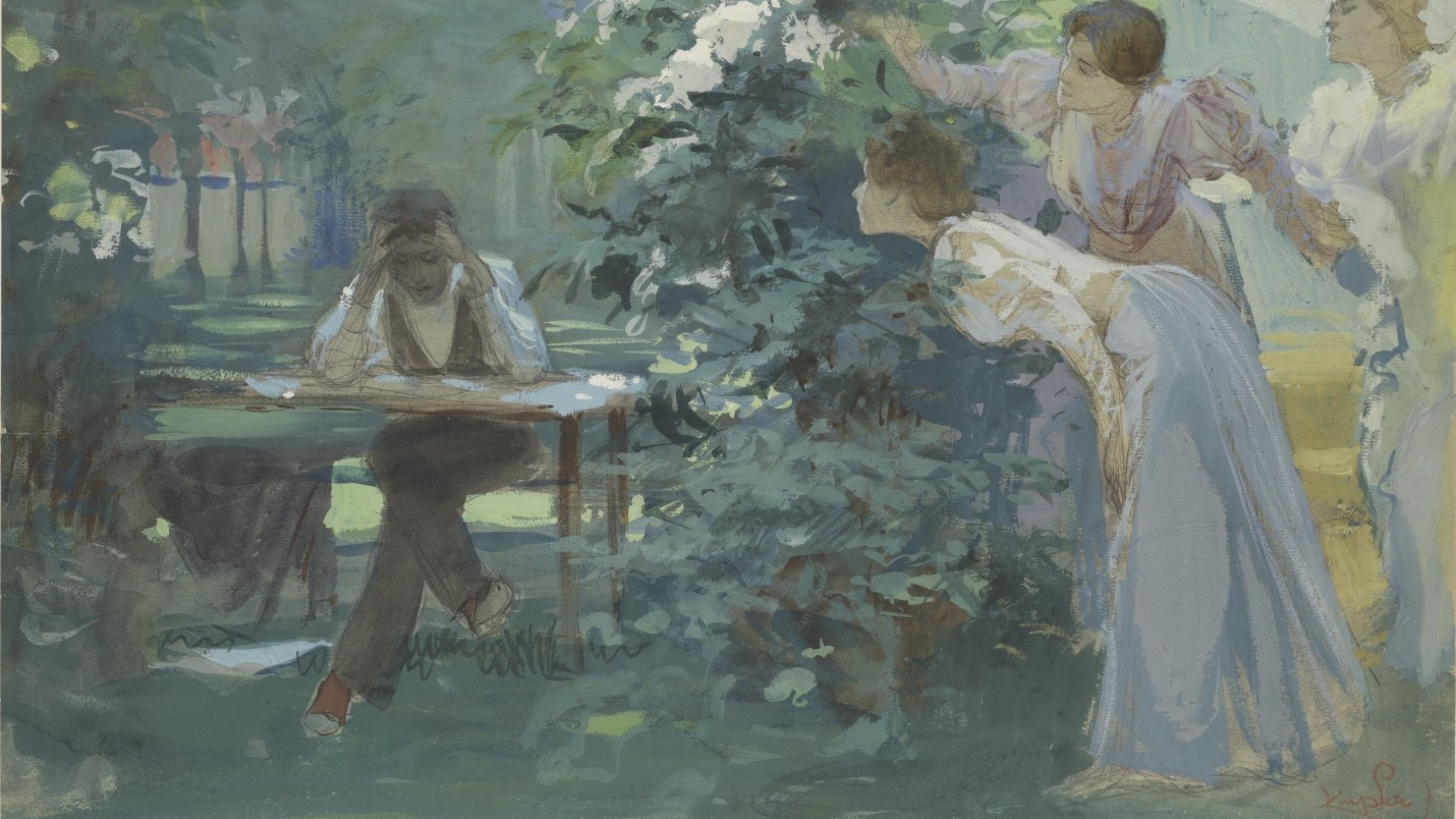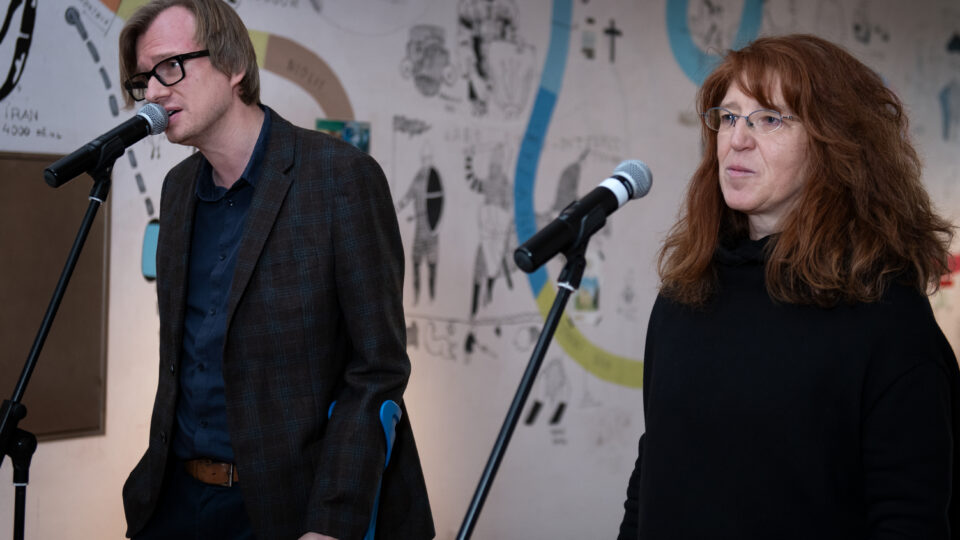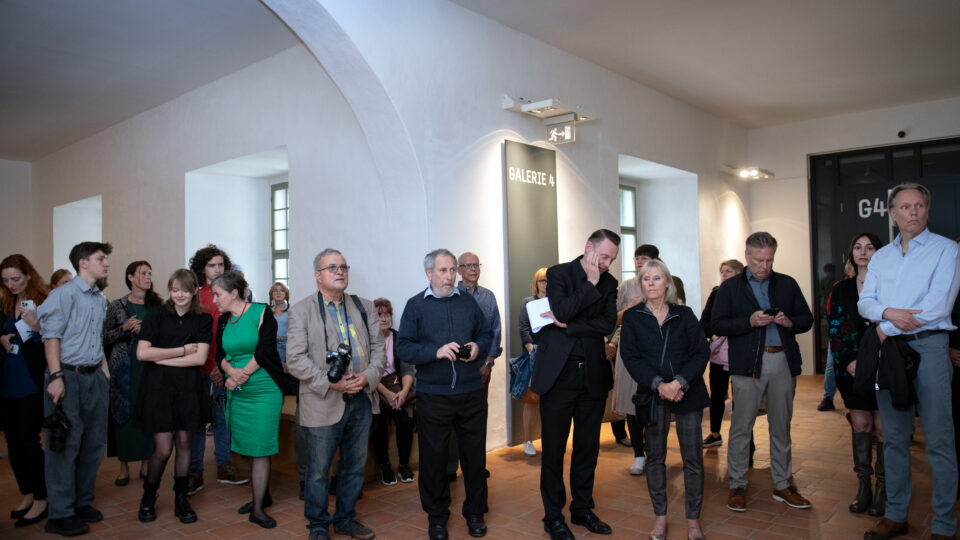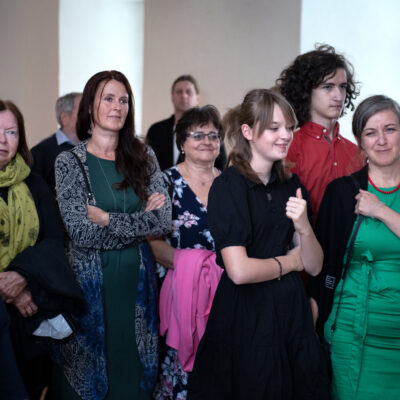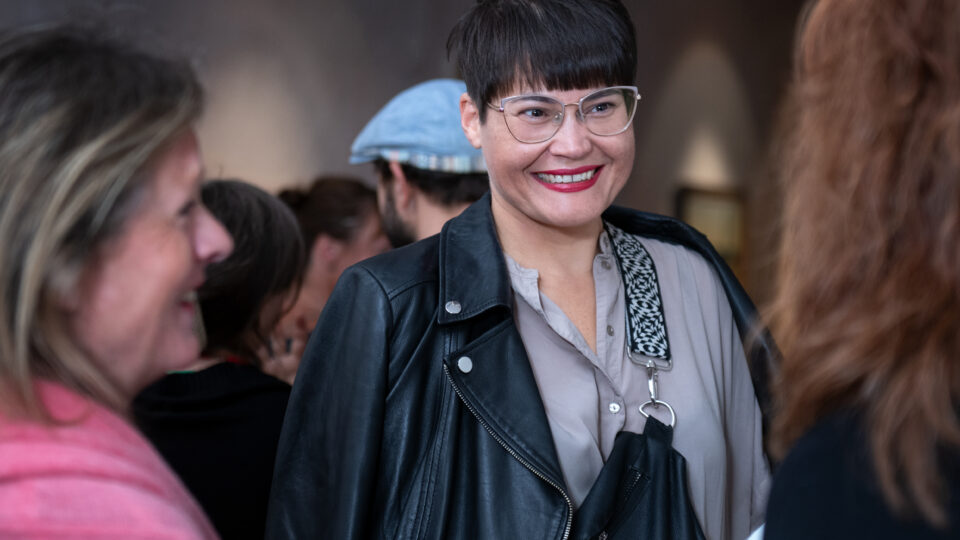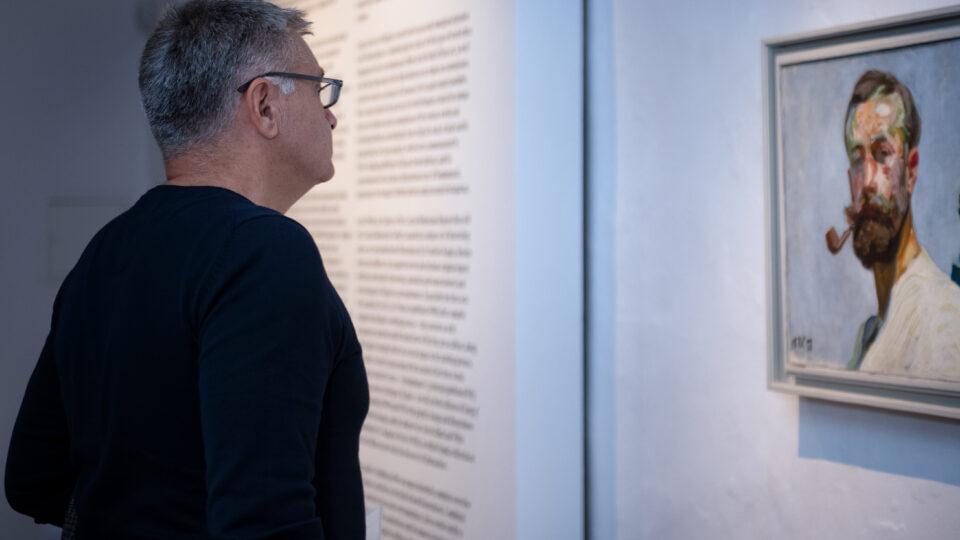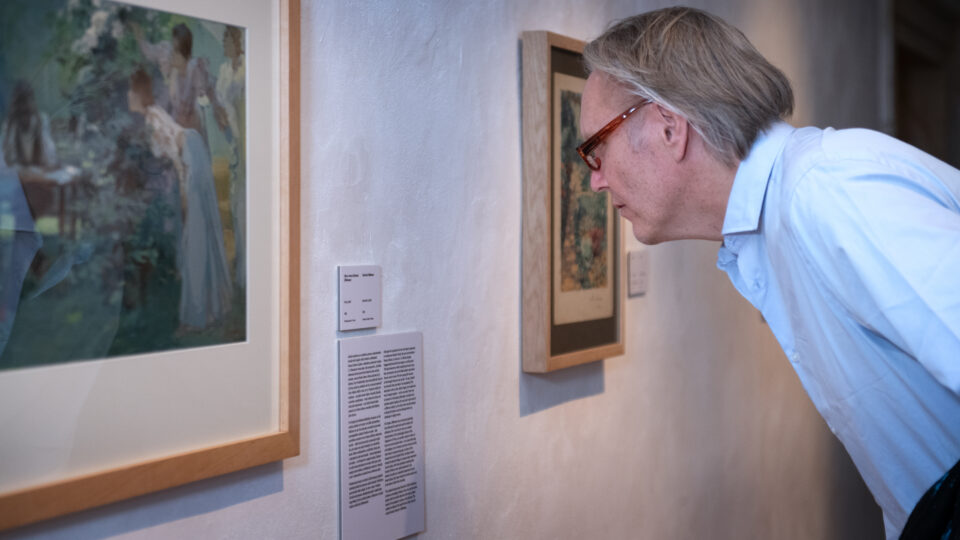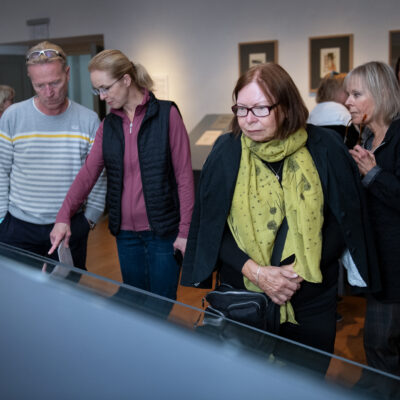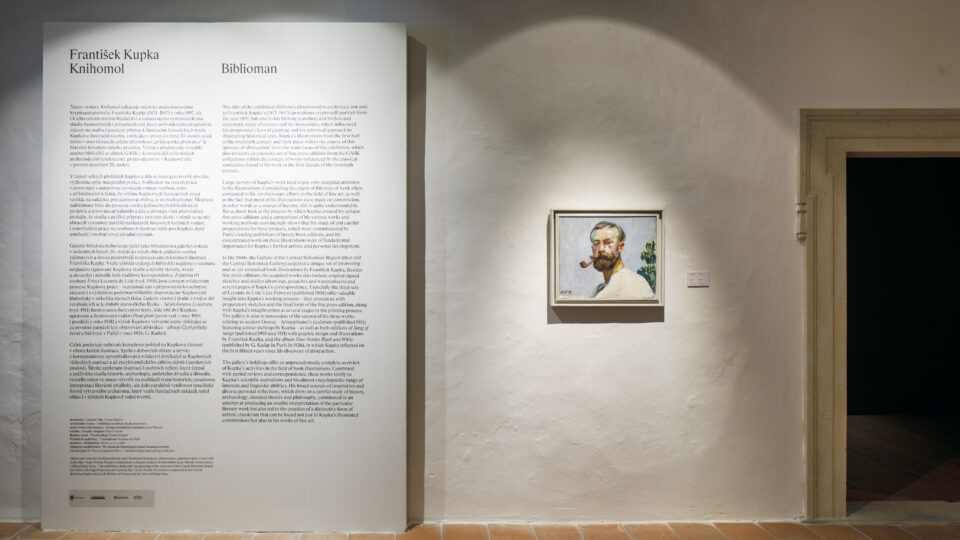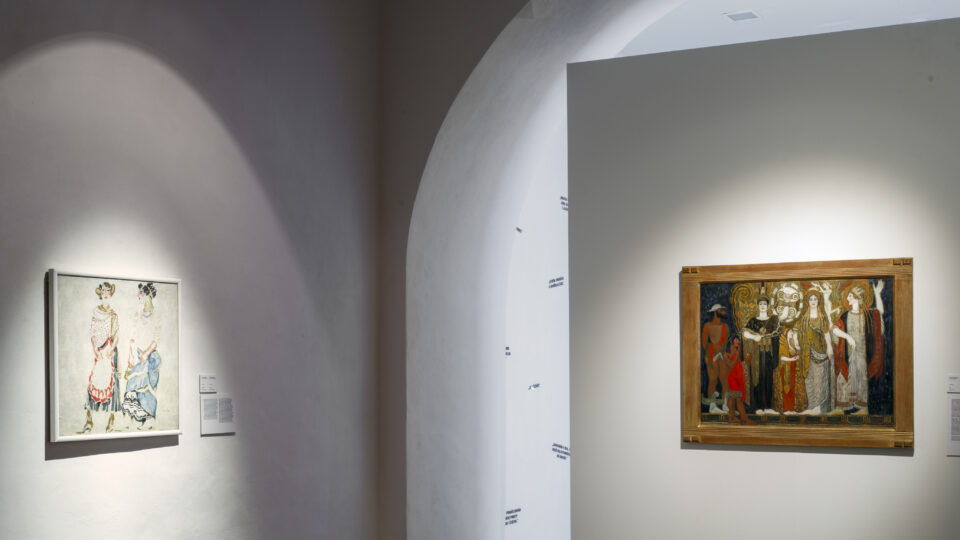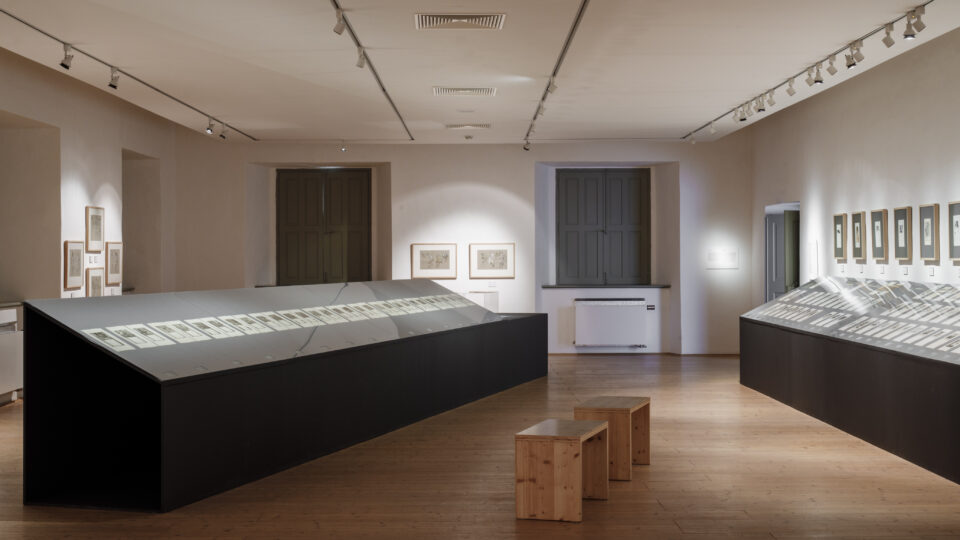The title of the exhibition Biblioman (Bookworm) is a reference not only to František Kupka’s (1871–1957) eponymous crypto-self-portrait from the year 1897, but also to his lifelong searching and tireless and systematic study of science and the humanities, which influenced his progressive views of painting and his informed approach to illustrating historical texts. Kupka’s illustrations from the first half of the twentieth century and their place within the oeuvre of this ‘pioneer of abstraction’ form the main focus of this exhibition, which also presents an extensive set of fine press editions from the GASK collections within the context of works influenced by the classical tendencies found in his work in the first decade of the twentieth century.
Large surveys of Kupka’s work tend to pay only marginal attention to his illustrations. Considering the extent of this type of work when compared to his revolutionary efforts in the field of fine art, as well as the fact that most of his illustrations were made on commission, in other words as a source of income, this is quite understandable. But a closer look at the process by which Kupka created his unique fine press editions and a comparison of his various works and working methods convincingly shows that his study of and careful preparations for these projects, which were commissioned by Paris’s leading publishers of luxury book editions, and his concentrated work on these illustrations were of fundamental importance for Kupka’s further artistic and personal development.
In the 1960s, the Gallery of the Central Bohemian Region (then still the Central Bohemian Gallery) acquired a unique set of interesting and as-yet unstudied book illustrations by František Kupka. Besides fine press editions, the acquired works also include original signed sketches and studies (drawings, gouaches and watercolours) and several pages of Kupka’s correspondence. Especially the three sets of Leconte de Lisle’s Les Érinnyes (published 1908) offer valuable insight into Kupka’s working process – they present us with preparatory sketches and the final form of the fine press edition, along with Kupka’s intaglio prints at several stages in the printing process. The gallery is also in possession of the second of his three works relating to ancient Greece – Aristophanes’s Lysistrata (published 1911) featuring colour etchings by Kupka – as well as both editions of Solomon’s Song of Songs (published 1905 and 1931) with graphic design and illustrations by František Kupka, and the album Four Stories Black and White (published by G. Kadar in Paris in 1926), in which Kupka reflected on the first fifteen years since his discovery of abstraction.
The gallery’s holdings offer an unprecedentedly complete overview of Kupka’s activities in the field of book illustrations. Combined with period reviews and correspondence, these works testify to Kupka’s scientific aspirations and his almost encyclopaedic range of interests and linguistic abilities. His broad sources of inspiration and diverse personal reflections, which drew on a careful study of history, archaeology, classical theatre and philosophy, culminated in an attempt at producing an erudite interpretation of the particular literary work but also led to the creation of a distinctive form of artistic classicism that can be found not just in Kupka’s illustrated commissions but also in his works of fine art.
